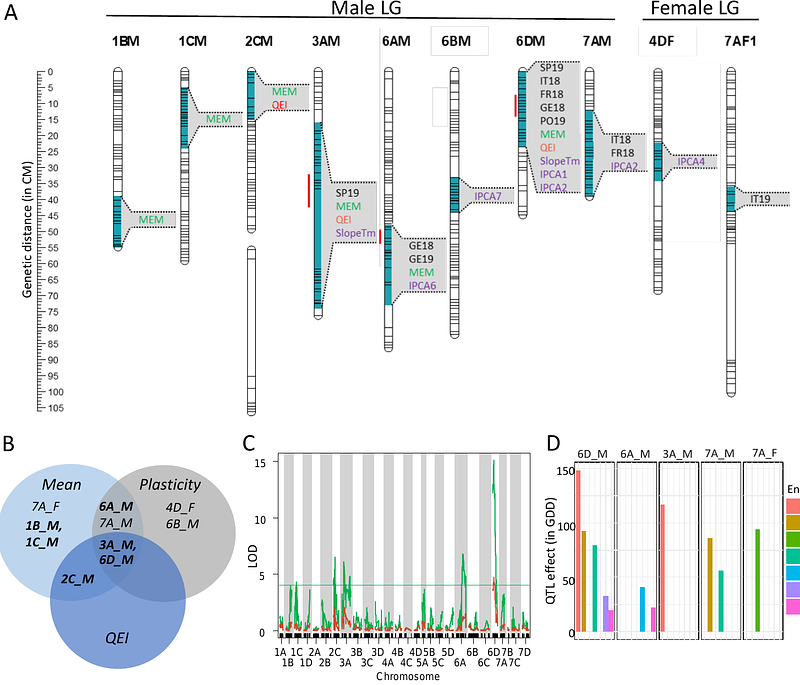Strawberry phenotypic plasticity in flowering time is driven by interaction between genetic loci and temperature

Strawberry phenotypic plasticity in flowering time is driven by interaction between genetic loci and temperature
Prohaska, A.; Petit, A.; Lesemann, S.; Rey-Serra, P.; Mazzoni, L.; Masny, A.; Sanchez-Sevilla, J. F.; Potier, A.; Gaston, A.; Klamkowski, K.; Rothan, C.; Mezzetti, B.; Amaya, I.; Olbricht, K.; Denoyes, B.
AbstractThe flowering time, which determines when the fruits or seeds can be harvested, is known to be sensitive to plasticity, i.e. the ability of a genotype to display different phenotypes in response to environmental variations. In the context of climate change, strawberry breeding can take advantage of phenotypic plasticity to create high-performing varieties adapted either to local conditions or to a wide range of climates. To decipher how the environment affects the genetic architecture of flowering time in cultivated strawberry (Fragaria x ananassa) and modify its QTL effects, we used a bi-parental segregating population grown for two years at widely divergent latitudes (5 European countries) and combined climatic variables with genomic data (Affymetrix(R) SNP array). We detected 10 unique flowering time QTL and demonstrated that temperature modulates the effect of plasticity-related QTL. We propose candidate genes for the three main plasticity QTL, including FaTFL1 which is the most relevant candidate in the interval of the major temperature-sensitive QTL (6D_M). We further designed and validated a genetic marker for the 6D_M QTL which offers great potential for breeding programs, for example for selecting of early-flowering strawberry varieties well adapted to different environmental conditions.